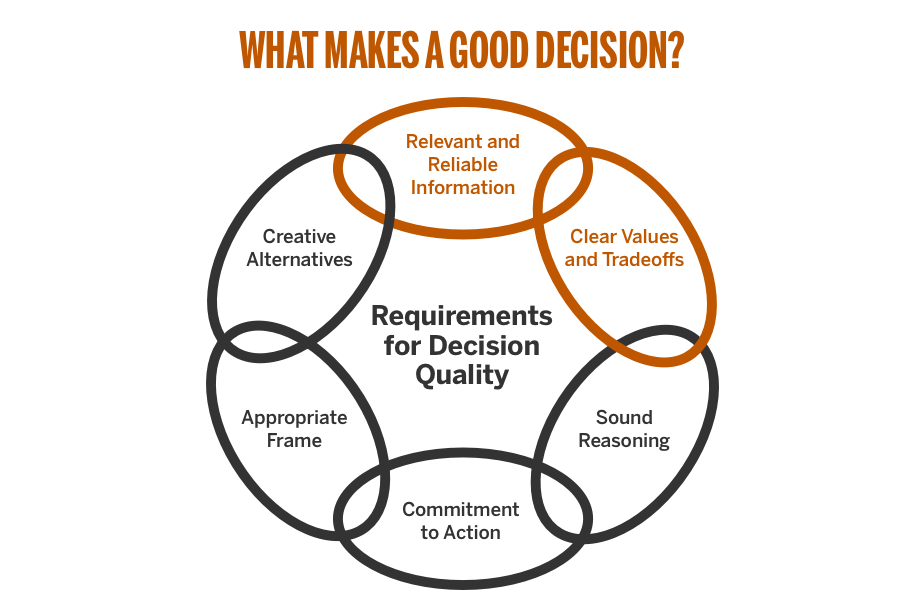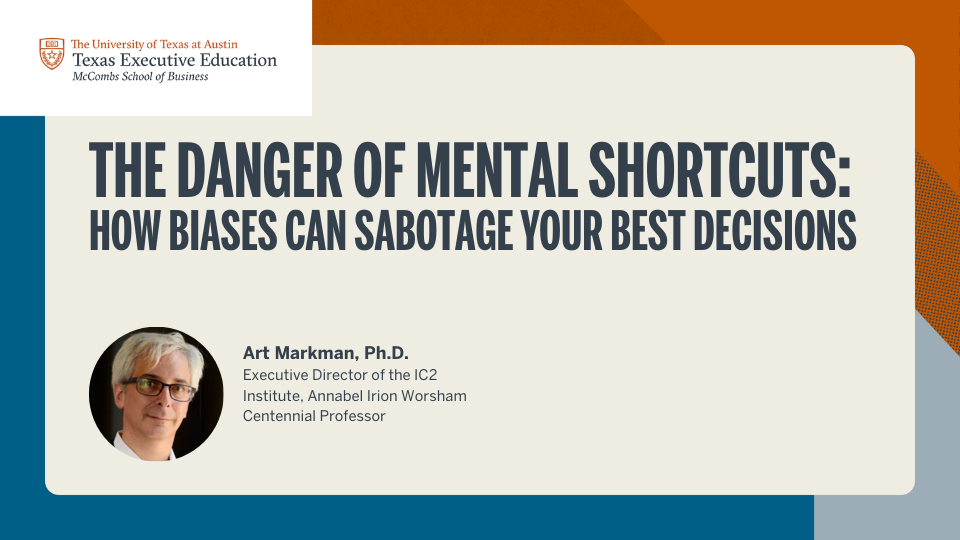Although it may seem counter-intuitive, the quality of a decision is not determined by its outcome. Instead, a good decision hinges on what went into making it. This becomes all the more important as it applies to decisions that involve high levels or risk or strategic questions. Decision quality is a strategic decision making process used by decision-makers to judge the quality of a decision at the time it is being made, and functions as a series of 6 items. Often, these items are thought of as “links” in the chain of decision quality.
- Correct framing of a problem or opportunity
- Realistic and feasible alternatives
- Relevant and reliable information to guide the ultimate choice
- Clear values and trade offs
- Sound reasoning in the analysis
- Commitment to action
In this post, we’ll take an in-depth look at the third and forth links in the strategic decision making process — relevant and reliable information and clear values and trade offs.

Gathering Relevant and Reliable Information
A decision’s overall quality depends on the quality of information used when making it; you cannot make a good decision if the information behind your choice is unsound. Thus, the third “link” in the chain of decision quality refers to gathering relevant and reliable information, and using this information to guide the ultimate choice. But what constitutes good information? How do you obtain the information which can inform the best decision?
Part of gathering quality information stems from addressing uncertainty. As humans we want to base decisions on facts, yet there are no facts about the future – just degrees of certainty. This means uncertainty, however undesirable, is an inherent part of our decisions. It’s important to keep in mind that not all uncertainties are equal, and there are ways we can bridge them- including through trend lines, surveys, consultation with experts, and analyzing data.
While we cannot eliminate uncertainty, we can make informed judgements. Judgements are often expressed as probabilities and as ranges of likely outcomes.
When making informed judgments about future outcomes, it’s best to avoid the following:
- Biased information
- Questionable experts
- Information that has been “cherry picked” to justify certain conclusions
- Temptation to seek information that supports assumptions
- Overconfidence in knowledge and ability to pierce the fog of uncertainty
Identifying Values and Formulating Tradeoffs
The fourth link in the chain of decision quality relates to values. Our goal in making a decision is to get what we want, and what we want is a function of what we value. When approaching decisions, it’s important to have clarity about our values that inform our wants — yet clarity isn’t always easy to come by. There are several barriers to clarity that can get in the way:
- A decision team of two or more people may disagree on what they want most
- Alternative 1 may offer more of what’s valued, but involve greater uncertainty
- Two or more values may be at stake in the same decision
- Competing values

So, what happens when values are competing? There are a few ways to tackle this situation. By making tradeoffs consistent with your values, you can still respect what you want without detracting from the overall value being sought. It’s possible to make an “even swap” and substitute one value for another, and to make values comparable even if they involve seemingly non comparable metrics. Above all, decisions should be made in line with the ultimate business value - shareholder value.
Be Strategic in Your Decision Making Process
To make a high quality decision it’s important to take the information available to you into consideration, and to assess how the decision aligns to your values. In our Decision Quality course, taught in partnership with Strategic Decision Group, you'll be equipped with the tools and questions to to address these items. When making a decision, you’ll need to assess it with reliable and relevant information to achieve as much clarity as possible. Then, you’ll need to ensure this aligns with your values.
Learn more about the first two links in the chain of decision quality in our blog post, Decision Quality: Strategic Decision Making Through Framing & Alternatives.
Learn more about the first two links in the chain of decision quality in our blog post, Decision Quality: Strategic Decision Making Through Framing & Alternatives.












